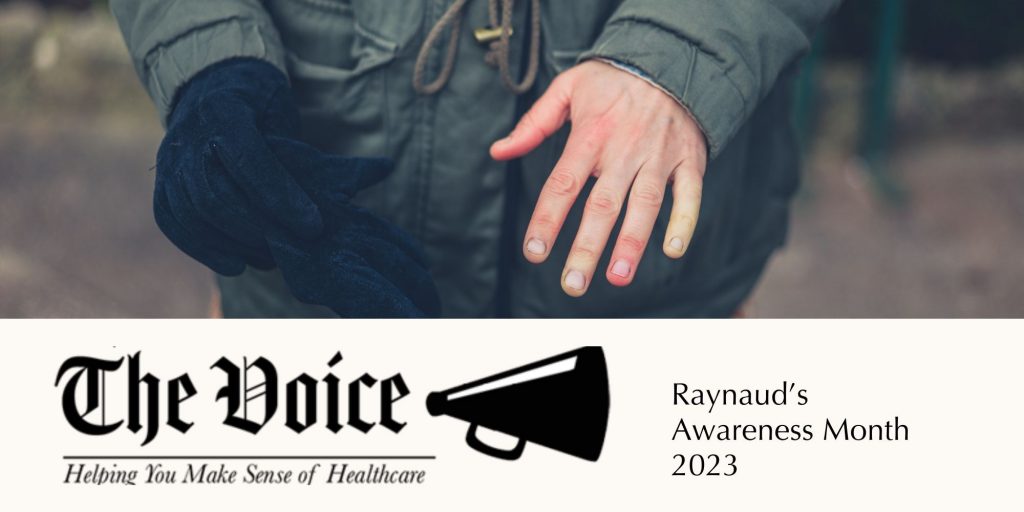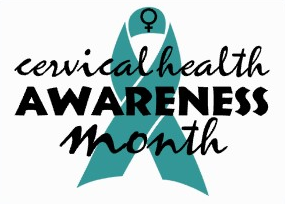Last Updated on October 25, 2023
As Raynaud’s Awareness Month is coming to a close, NeedyMeds is proud to put a spotlight on one of our partners, the Raynaud’s Association! We have received permission to share the following article from their website. Be sure to visit them at Raynauds.org!
Little is known about Raynaud’s. In fact you’re way ahead of most people if you’ve even heard of it. Unfortunately some information published about Raynaud’s is inaccurate, and we want to set the record straight on 10 myths about Raynaud’s.
Myth #1: Raynaud’s is a rare disease.
It can be difficult putting firm numbers on Raynaud’s sufferers because only one in ten are actually aware that their pain and discomfort has a medical explanation, thus resulting in many Frosties going uncounted. Nevertheless, the published statistics on Raynaud’s sufferers is estimated at a minimum of 5% of the population, and we’ve seen the stats range as high as 10%, along with estimates that it affects as many as 20% of all women of childbearing age.
At 5 to 10% of the population, 16 to 32 million people suffer from Raynaud’s, so, in fact, it’s quite prevalent. Chances are that everyone knows someone with this medical condition, but unfortunately most sufferers just walk around thinking they’re cold all of the time, and don’t think to discuss their symptoms with a doctor.
To be labeled a rare disease, a disorder would affect fewer than 200,000 Americans, so the Raynaud’s community is far too large to be placed in this category.
Myth #2: There is a formal test to diagnose Raynaud’s.
There is no single test that identifies Raynaud’s, which further explains why the condition can go under the radar with both patients and the medical community.
Doctors often make the diagnosis based on the patient’s description of their symptoms, such as the color changes that occur after being exposed to cold temperatures, or they may witness an attack during a patient’s visit.
Sometimes doctors may try to trigger an attack by immersing the patient’s hand in ice water to provoke an episode. However, this test doesn’t always work, as for some patients, the whole body needs to be exposed to cold before an attack occurs.
More recently a thermal imaging technique using a special camera to detect infrared radiation or heat is being used to graphically display visual variations in body temperature to detect Raynaud’s. Again, however, the patient needs to be exhibiting an attack during the study, and since the majority of Raynaud’s sufferers have normal circulation when not experiencing attacks (see Myth #4 below), it’s possible for the result to indicate no presence of Raynaud’s at the time of the thermal imaging, particularly since the technique is likely performed indoors in a comfortable setting.
While there is no single test to detect primary Raynaud’s, doctors might order blood work (anti-nuclear antibody or ANA blood test) to rule out the presence of auto-antibodies associated with more serious autoimmune diseases to which Raynaud’s can be secondary, such as scleroderma, lupus, mixed connective tissue disease, Sjogren’s syndrome, rheumatoid arthritis and other diseases that have Raynaud’s as a possible component. Some specialists (usually rheumatologists) will also perform a nailfold capillaroscopy, a simple microscopic examination of the small blood vessels at the base of the fingernail. This test is used also to look for the presence of an underlying connective tissue disorder.
So while test options do exist to distinguish whether a patient’s Raynaud’s is primary or secondary, there is currently no sure-proof scientific method to diagnose primary Raynaud’s.
Myth #3: Raynaud’s affects only fingers and toes.
While fingers and toes are the most commonly affected areas of the body to experience symptoms, Raynaud’s can affect any extremity, including the ears, nose, tongue, breasts (an issue for breastfeeding moms) or even sexual organs. During an attack they can change colors (white as blood flows away, blue from the lack of oxygen carried in the blood, red as the blood vessels open up following an attack), become numb and experience pain as the blood rushes back into the extremity.
The reason for extremities to be affected is that the body – when exposed to extreme cold or stress – will work to shut down the blood vessels in the outer parts of the body to protect the vital organs at its core. (see Myth #4 below).
It can be difficult and frustrating for Frosties who have attacks in other areas of the body because they are more difficult to protect – how do you fashionably put a warm cover on your nose!
Myth #4: Raynaud’s sufferers have “poor circulation”.
While Raynaud’s can be caused by vascular disorders, or circulation can be impaired by more serious primary autoimmune diseases, most sufferers with the primary form of Raynaud’s have normal circulation.
It’s just an issue during attacks, and the attacks are a normal human response to cold or stress sometimes referred to as the fight or flight syndrome, a natural survival response when the body feels threatened. For reasons still unexplained, Raynaud’s sufferers have a much lower threshold for this reaction. And when sufferers reach their temperature or stress threshold, the blood vessels constrict in the extremities in order to send blood to the body’s core for protecting their vital organs. Once the attack is over (sufferer gets warm or calm again), normal circulation resumes.
In the absence of an attack, most Raynaud’s sufferers with the primary form (the large majority of patients, 90%+) will have normal vascular functions and circulation.
Myth #5: Raynaud’s is an allergy to the cold.
Raynaud’s is not an allergic reaction to the cold. There is another condition that is also extremely sensitive to cold temperatures called Cold Urticaria. With this condition, a sufferer is literally allergic to cold temperatures.
Symptoms involve breaking out in a rash and itching. Here’s the description: “Cold (or physical) urticaria is a condition in which red allergic skin lesions and itching are produced by exposure to cold temperatures, water, or mild trauma.”
Raynaud’s and cold urticaria are sometimes confused even in the medical community, so it’s important to know the difference and seek the proper treatment.
Myth #6: Raynaud’s is merely a nuisance, not a medical condition.
It’s very frustrating when a family member or friend won’t acknowledge that a Raynaud’s sufferer’s pain and discomfort is a medical issue. It’s even more frustrating when a doctor acts like it’s no big deal.
And because the world around us often reinforces this myth, Frosties tend to write off the fact that there are treatments available for more severe cases (see Myth #7), and that there are consequences involved if a patient doesn’t learn their triggers and how to protect themselves to help avoid attacks.
One thing doctors often don’t share is the fact that Raynaud’s tends to be a conditioned response. So, the more attacks you have, the more likely you are to have more frequent attacks and they can get progressively more severe. Repeated exposure to the cold and stress can aggravate the condition, increasing the frequency and severity of attacks over time.
By the same token, if you can decrease the onset of attacks, you are less likely to trigger future ones, and while they won’t necessarily go away, they can become less frequent and less intense. That’s why it’s important to dress properly, avoid exposure and stress when possible (gloves in the freezer, etc.), and make whatever lifestyle changes you can that may help reduce the onset of attacks (e.g., how to avoid standing on a cold train platform every morning commuting).
More doctors should advise us that we do have some (albeit limited) control over the condition. And if we don’t take control long term – at the extreme – we can potentially do permanent damage to our blood vessels in severe cases.
Myth #7: Raynaud’s episodes always involve the patriotic white, blue and red color changes.
The standard description of the skin’s color changes during a Raynaud’s attack is that the fingers, toes, or other extremities will turn white as the blood flows away from the digits towards the body’s core (see Myth #4 above), then blue from the lack of oxygen associated with the blood, then – as the sufferer begins to feel warm or calm again – the blood flows back more quickly than normal, and the digits can turn red as the blood returns. The quick return of blood to the extremities can be painful, causing throbbing and swelling.
While this white-blue-red pattern is the common frame of reference for Raynaud’s color changes, not everyone goes through this textbook pattern. Some sufferers never go past white in their digits, representing milder attacks. Others may skip white straight through to purple or a grayish black, particularly for those with more severe Raynaud’s. Some sufferers report their fingers appearing a mottled pinkish/white/red pattern during attacks.
Further complicating the issue, not all digits will go through color changes. Some sufferers will experience attacks in just one or a few digits, or only on one hand or foot. It isn’t always symmetrical.
Raynaud’s appears to be a very individual experience, and that fact reinforces why it’s difficult for doctors to diagnose the condition. If they are looking for the textbook patriotic color changes and that’s not the case, a patient’s symptoms could be overlooked or misdiagnosed.
Myth #8: The only treatment for Raynaud’s is to stay warm.
A patient may be fortunate in having a doctor recognize and formally diagnose their condition only to be told there’s not much they can do to help – just stay warm and avoid stress. In addition to this being a difficult task, particularly for Frosties living in colder climates, it’s a frustrating response, and not necessarily the case.
While it’s true there is no medication that eliminates Raynaud’s attacks, there are drugs that can decrease their severity or frequency. The standard medications offered severe Raynaud’s sufferers are in the family of calcium channel blockers. These drugs work to open up or dilate the blood vessels so that the blood circulates more freely. Topical antibiotics or nitroglycerin paste or patches may be prescribed to protect against infected skin ulcers. As different brands and generic forms of these drugs are available, work closely with your doctor to determine what works best for your body. Should you choose to go on medication, be aware it does take time to see results.
When Raynaud’s is very severe, resulting in intolerable pain and ulcers that don’t respond to medications, a surgical procedure called a digital sympathectomy may be considered. In this procedure, a surgeon cuts the tiny nerves to the arteries of the fingers. The procedure isn’t always effective, and the benefits generally will not last. However, this “last ditch” approach may preserve the finger or toe from amputation. Some patients report that the procedure reduced their pain, healed their ulcers and/or prevented new ulcers from forming.
More recent research has shown promise in using ED drugs such as sildenafil (Viagra®), vardenafil (Levitra®), and tadalafill (Cialis®) in treating Raynaud’s symptoms, particularly when traditional treatments such as vasodilators and topical nitroglycerine-based creams provide insufficient relief or aren’t well tolerated. These drugs, while typically prescribed for ED in males, act as vasodilators which work to increase blood flow. Even with their promising results in limited studies, these medications will not be a viable option for all sufferers, so work with your doctor to determine if they are right for you.
In terms of non-medical treatments, self-help, relaxation techniques, such as biofeedback and tai chi, work for some people to minimize the severity of Raynaud’s attacks. These methods require a great deal of practice and commitment to achieve real results. They won’t be effective for everyone, particularly for more severe secondary Raynaud’s sufferers.
Some people claim to have success with natural and holistic remedies, but these have not been clinically verified as effective, and the body of knowledge on nutritional strategies to help Raynaud’s sufferers is limited. Be sure to make your doctor aware if you are taking, or plan to use, any such supplements, as they may interact with other medications or have negative side effects.
Myth #9: Raynaud’s is only an issue in cold climates/cold seasons.
While it may seem warmer surroundings would be safe for Raynaud’s sufferers, attacks can be triggered by any exposure to cold, including air conditioning, outdoor activities such as swimming, or everyday activities like holding a cold glass or reaching into the freezer.
Drastic temperature changes in any direction can cause symptoms, including exiting an air conditioned building into a hot, humid environment, which can be a factor in warmer climates where stores and offices are air conditioned year-round. In addition, stressful situations that can trigger attacks don’t go away in the warmer months and can’t always be avoided in warmer locales. These are day-to-day issues Frosties face regardless of the time of year or where they live.
Bitter cold winters make life miserable for many Raynaud’s sufferers, but warmer climates also present challenges. For this reason, moving to a warmer climate isn’t always the best option for Raynaud’s sufferers.
As stated above, attacks can occur in air-conditioned spaces, and air conditioning can be a factor throughout the year in warmer areas of the country. Plus, the stress associated with a geographic move can in itself bring on attacks. If the move involves losing access to key support resources (e.g., friends and family, dog walkers, childcare professionals, etc.), the result can be extremely stressful before new resources are put in place, and stress can trigger attacks.
Raynaud’s sufferers should take into consideration the degree of control they’ll have over their environment during the day (i.e., in an office or retail store for work) and think through the environmental challenges to be faced at home, at work, and other venues. In the end the relocation opportunity should be seriously considered from a holistic lifestyle/family perspective. Moving to a warmer environment isn’t always the best solution.
Myth #10: Raynaud’s sufferers are likely to lose fingers or toes.
We regularly come across articles in the press that suggest Raynaud’s sufferers are likely to lose fingers or toes to gangrene.
It’s truly not the norm for Raynaud’s. Most sufferers can improve their symptoms through lifestyle changes and avoidance techniques. Raynaud’s can be uncomfortable and inconvenient, but it’s generally not life or limb threatening for the majority of Frosties.
Less than 10% of sufferers have severe symptoms associated with more serious autoimmune diseases, and only a small portion of these patients will have extreme issues involving the loss of digits. For anyone who doesn’t experience dangerous digital ulcers or infected skin lesions that won’t heal, loss of digits is a non-issue.
Myth Infographics
We worked with our partners at HotHands to create two infographics on the above Raynaud’s Myths. Click the links below to view them:
Part 1 – Myths 1 – 5
Part 2 – Myths 6-10
© Copyright 2023 The Raynauds Association | All Rights Reserved




